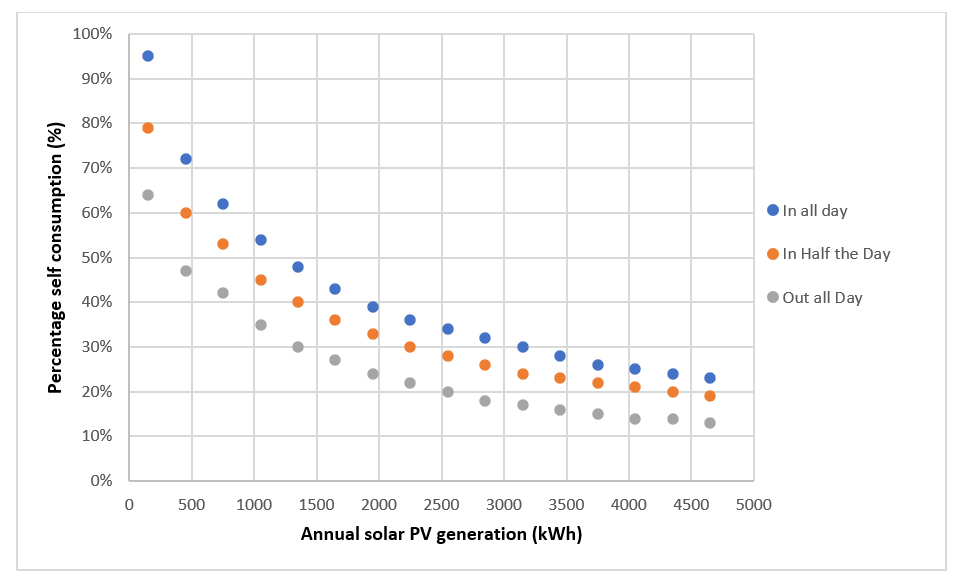Self consumption of solar PV
The percentage self-consumption of solar PV is an indication of how much of the electricity produced by a domestic solar PV array that has been consumed by the household. If half of the electricity produced by the PV is consumed by the household, the percentage self-consumption is 50%.
The self-consumption is affected by various factors such as the level of solar PV generation, household consumption and times of consumption. The Microgeneration Certification Scheme (MCS) has produced a Guidance Note which allows estimates of the amount of self-consumption to be made. This is based on actual data and modelling by organisations like Loughborough University.
For domestic solar PV installations receiving the feed-in tariff, payments were based on deeming the level of export (and self-consumption) of solar PV to be 50%. In practice, the level of self-consumption is often lower than this, particularly with larger PV systems.
The figure below shows estimates of the percentage self-consumption for a household with annual electricity consumption of between 3,000 and 3,499 kWh. The percentage self-consumption decreases with increased solar PV generation and when the household spends less time at home during the day. This means a higher proportion of the electricity is being exported to the grid and the household would benefit by shifting electricity consumption to times when there is greater generation from solar PV.

An increase in self-consumption of the solar PV can be achieved using the following methods:
- Install domestic battery storage to store excess electricity generation for consumption later in the day.
- Install a solar immersion controller. This can use excess solar generation to power the immersion heater for a hot water cylinder. This reduces fuel bills for domestic hot water.
- Run appliances like washing machines or dishwashers in the middle of the day when solar generation is higher.
- Where safe, use a timer or smart socket to schedule a suitable appliance to run during the day. This might include charging a laptop or tablet computer.

